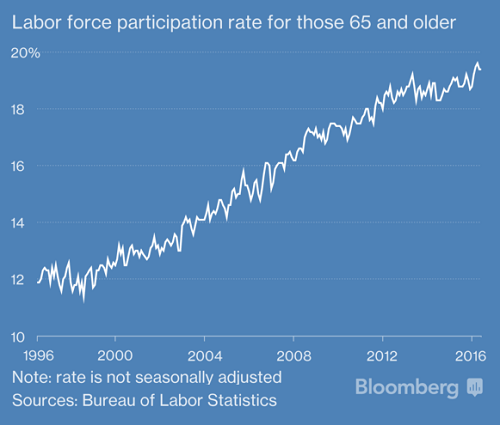Studies in this week’s Hutchins Roundup conclude that population aging slows growth mainly through its effect on labor productivity, sovereign debt restructurings are only good for growth if they deal with debt overhang, and more.
Population aging will lower growth in coming decades
Nicole Maestas of Harvard and Kathleen Mullen and David Powell of the RAND Corporation find that a 10 percent increase in the fraction of the population aged 60 and older decreases the growth rate of per capita GDP by 5.5 percent. Contrary to the conventional view that aging affects growth primarily through its impact on labor force participation, they find that two-thirds of the negative effect arises from slower productivity growth of workers across the age distribution. They conclude that population aging will lower annual GDP growth by 1.2 percentage points this decade and 0.6 percentage point next decade.
Sovereign debt restructurings suppress growth unless they remove debt overhang
Using data on 86 default episodes in 67 countries over the period 1970-2010, Lorenzo Forni, Geremia Palomba, Joana Pereira, and Christine Richmond of the IMF find that, on average,debt restructuring lowers economic growth. However, final restructurings—those that allow countries to exit default— are associated with somewhat higher growth. Final restructurings tend to be better for growth because they reduce countries’ debt, with the strongest effect for countries that exit restructurings with relatively low debt levels.
Paydays loans help some consumers, hurt others
Using detailed data on household consumption and proximity to payday lenders, Christine Dobridge of the Federal Reserve Board of Governors finds that access to high-cost credit helps households experiencing temporary financial distress. In particular, access to payday loans makes it less likely that households will miss a mortgage payment or cut back on other household spending following extreme weather events like hurricanes or blizzards. But under normal conditions, access to high-cost credit reduces household spending substantially. She concludes that, although regulator concerns about the negative effect of payday loans on household wellbeing are well founded, such loans also serve an important function for households in distress.
Chart of the week: More of the elderly choose to work
Quote of the week: “It is…important to understand which factors put students most at risk for default,” says CEA chair Jason Furman
“Although much attention has been paid to some cases of students with very large loan balances, in general these large loan balances are incurred when paying for graduate school—an investment that generally leaves people able to repay the loans with their additional earnings. In fact, the highest rates of student loan default occur among students with the smallest amounts of debt. That’s because students with lower amounts of debt are much less likely to have completed, having left school before paying for the full cost of a degree. Completing a degree substantially raises the likelihood of finding a well-paying job and successfully repaying student loans…”
— Jason Furman, chairman, Council of Economic Advisers
The Brookings Institution is committed to quality, independence, and impact.
We are supported by a diverse array of funders. In line with our values and policies, each Brookings publication represents the sole views of its author(s).









Commentary
Hutchins Roundup: Population aging, sovereign debt restructuring, and more
July 28, 2016